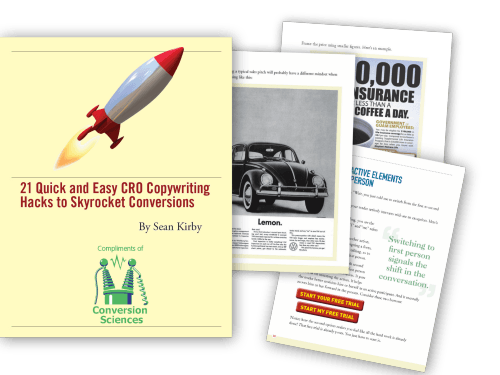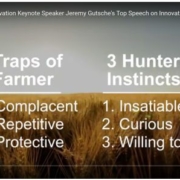5 Elements of Persuasive Writing that Make Your Posts Takeoff
As content writers, we’re trying to persuade others to see our point of view – to agree with us. Regardless of whether it’s to click on a link or to purchase a product, we want our writing to influence others in a positive manner.
To write in an engaging and persuasive way is an art form – it’s elegant, refined and exercises discernment. And it’s worlds apart from the distasteful, strong-arm tactics employed by spam marketers.
Crafting content that influences isn’t necessarily hard, but it does take a bit of practice. So, without further ado, let’s have a look at five key elements that contribute to successful and persuasive content writing.
1: Be an Expert
Few things are more influential than the opinion of an expert. Why? Because true experts know what they’re talking about. It’s clear in their authenticity and transparency. Experts don’t use fluffy filler material in their persuasive writing, and they don’t try to distract the reader with gimmicks.
If you want to establish yourself as an influencer in your niche, you need to be the premier expert in your field. You don’t need a degree or years of related experience, but you need to demonstrate that you’re a specialist. You want to be so knowledgeable in your particular market that your content is oozing with confidence and certainty.
Note the word specialist.
Experts don’t try to cover all the bases, and they don’t pretend to know everything remotely related to their topic.
They specialize in one particular aspect or angle, and by sharing their knowledge they become an authority. And authority bestows persuasion.
La Carmina, a very successful travel blogger self-describing her approach as “spooky-cute”, embodies this idea to perfection because her success is not the result of trying to be all things to all travelers. Her advice? “Be niche. Don’t be afraid to focus on a specific topic or audience…” Read more of her suggestions for being a specialist on the Huffington Post.
2: List the Most Important Information First
Writing persuasive copy for web pages is similar to that of writing news articles. That is, the most important information comes first – which is quite different from writing an essay or a short story. Journalists refer to this method as writing in an inverted pyramid, and it starts with the most relevant points which are then followed by related details and background information.
In this manner, you have the opportunity right at the start of your post to motivate your readers to continue on to your benefits, features and call to action.
By highlighting the outcomes that you or your products can provide at the beginning, you’ll give them a clear understanding of the big picture. Don’t wait for the conclusion of your piece to deliver the vision they want, because they’ll be long gone.
Gregory Ciotti at Unbounce gives a great example of this idea in his post on how research can affect the way we write copy. He captures the essence of his entire topic in the second sentence, leaving no doubt in the readers’ mind about whether reading the post will be beneficial or not.
3: Give Your Readers Reasons Why
Written or spoken, few words are more persuasive than the word because.
In her book Mindfulness, social psychologist Ellen Langer clearly demonstrated that people are more likely to comply to a request if they’re given a reason via the word because. Even if the reason is redundant or doesn’t make sense!
Another persuasive word to work into your copy is imagine – asking your readers to imagine their desired outcome is a safe alternative to asking them to take action. It’s make-believe, so their inner gatekeeper (the voice in our head suspicious of others’ motives) won’t be inclined to object. And getting your prospects to imagine themselves in happy situations is a powerful influencer.
At Enchanting Marketing, Henneke shows us how to master this element with the words ‘because’ and ‘picture’ right in the introduction of her post (picture being a synonym of imagine). She first suggests we may be making a mistake in our web writing, then gets us to picture a client clicking where we want them to and finally shows us ‘why’ we’re making the mistake – with the word because.
You can’t help but continue reading, and for web content, that’s a big deal because, as Henneke says, you are writing for people who probably aren’t going to read what you write. People don’t read articles all the way through online like they do in print.

Picture your customers as wild animals when you write copy suggests Henneke Enchanged Marketing
4: Benefits First, Then Features
This point may seem a bit counterintuitive, but only because you know your products or services so well – still, you need to remember that your prospects don’t. Keep in mind that they’re looking for specific outcomes.
It might help to think of the benefits as the outcome they desire, while the features are part of the solution to their problem. For example, “You can look like a supermodel in two weeks with our Magic Pills – no need for diets or exercise!” The benefit is looking like a supermodel in two weeks. The features are no dieting or exercising.
By succinctly outlining the benefits first, then the features, you’ll generate greater interest in your clients’ minds.
Brian Clark shows us how to successfully highlight benefits, and to differentiate between benefits and features, with the ‘forehead slap test’ in this great post on Copyblogger.
5: Write for Scanners
It’s important to remember that most online consumers are scanners first and readers second. To persuade your prospects actually to read your content, use some of these eye candy elements to draw them into your article:
- Headings and subheads, relevant and on topic
- Bullet lists to highlight benefits and features
- Font variations, bold, italics, and colored links
- Short sentences and short paragraphs, each with one idea only
- Images and infographics
- Memorable captions
Case Study
Alex Turnbull at Bufferapp expertly includes all five of these elements in his post on research-backed content. You’ll notice that:
- He establishes himself as an expert on writing persuasive content with solid research, and results, to establish his status.
- The most important information is listed first. The graph shows us that a headline that includes research received a +40% increase in click throughs.
- He gives us the reason ‘why’ in a big way – right there in the first sub-header: “why you should write research-backed content”.
- The benefit is shown in a graph demonstrating the increase in click through rates.
- The post is easily scanable. Lots of relevant subheads, graphs, images, bold and colored fonts. And the sentences and paragraphs are short and concise, with a memorable caption: “ROI is about the MECHANIC using the tool.”
With a bit of practice in applying these key elements, you’ll be successful at writing persuasive content that your readers will understand and appreciate – and that’s a winning situation for everyone.
- 5 Elements of Persuasive Writing that Make Your Posts Takeoff - March 31, 2015













A good writer can be many things. It depends on the intended audience. If you are writing mystery, keep the conclusion till the end, if writing a scientific paper, list the hypothesis first.
Cari has a firm grasp on the science of writing for marketing. Give the credibility (Expert), then the metrics (proof), why it works(reason), benefits, and format. first you hook them, and wait till the end to tell them the benefit. It will work every time, and it will keep eyeballs